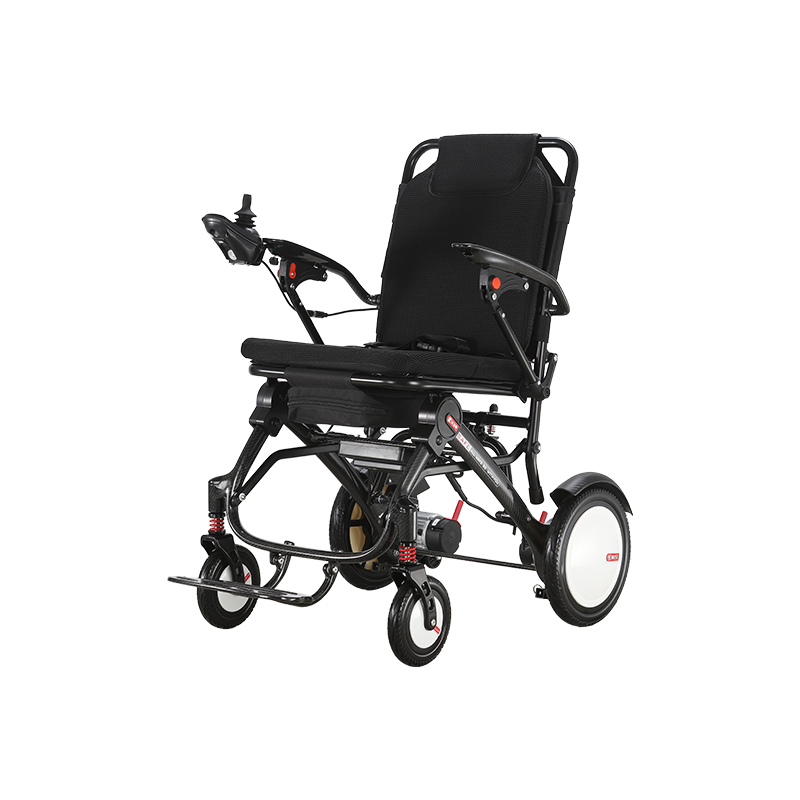About Sinovehicles
- All
- Product Name
- Product Keyword
- Product Model
- Product Summary
- Product Description
- Multi Field Search
Views: 0 Author: Site Editor Publish Time: 2023-12-01 Origin: Site







Introduction
Explanation of the purpose of the article: to provide readers with a comprehensive understanding of the difference between power wheelchairs and motorized wheelchairs, and to help them make an informed decision when choosing between the two
Brief overview of mobility aids and their importance to users with mobility issues, including the ability to maintain independence and improve quality of life
Clarification of terminology and definitions, including the differences between power, motorized, and electric wheelchairs
What is a Power Wheelchair?
Detailed explanation of the features and components of a power wheelchair, including motors, controllers, batteries, and brakes
Overview of the different types of power wheelchairs available, including mid-wheel drive, rear-wheel drive, and front-wheel drive models, and their respective benefits and drawbacks
Advantages of power wheelchairs, including their maneuverability, precision control, and customizability, as well as the availability of a wide range of accessories
Limitations of power wheelchairs, including their size and weight, cost, and maintenance requirements
Examples of popular power wheelchair models on the market, including their features, capabilities, and pricing
What is a Motorized Wheelchair?
Detailed explanation of the features and components of a motorized wheelchair, including motors, controllers, batteries, and brakes
Overview of the different types of motorized wheelchairs available, including standard and heavy-duty models, and their respective benefits and drawbacks
Advantages of motorized wheelchairs, including their affordability, simplicity of operation, and battery life, as well as their ease of transport and storage
Limitations of motorized wheelchairs, including their limited customization options, lack of precision control, and suitability for only certain types of terrain
Examples of popular motorized wheelchair models on the market, including their features, capabilities, and pricing
Key Differences between Power Wheelchairs and Motorized Wheelchairs
Comparison of power sources and battery life between power wheelchairs and motorized wheelchairs, including the use of rechargeable batteries and the average run time of each type of device
Overview of the maneuverability and terrain compatibility of each type of device, including the differences between mid-wheel, rear-wheel, and front-wheel drive models, as well as the suitability of each type of device for indoor and outdoor use
Explanation of customization and seating options available for each type of mobility aid, including seat size, depth, and width, as well as backrest height and angle, footrests, and armrests
Comparison of the different use cases and intended user groups for each type of device, including the suitability of each for users with different types of mobility issues, as well as the needs of caregivers and family members
In-depth analysis of factors to consider when choosing between power wheelchairs and motorized wheelchairs, including the user's mobility level, available storage space, transportation needs, and maintenance requirements
Factors to Consider When Choosing Between the Two
Detailed discussion of the different factors that should be considered when choosing between power wheelchairs and motorized wheelchairs, including:
Mobility level: whether the user requires precision control and customizable options
Living space: the size of the device and available storage space, as well as the dimensions of doorways, halls, and elevators
Transportation needs: whether the device needs to be transported in a vehicle, and the type of vehicle being used
Maintenance requirements: the level of maintenance required for each device, including battery replacement, tire maintenance, and repairs
Explanation of different financial considerations when choosing between power wheelchairs and motorized wheelchairs, including cost, insurance coverage, and available payment plans
Conclusion
Recap of the main differences between power wheelchairs and motorized wheelchairs, and the key factors to consider when choosing between the two
Discussion of the importance of making an informed decision when selecting a mobility aid, and the positive impact that these devices can have on users' quality of life
Encouragement to consult with a healthcare professional, mobility specialist, or other expert when making a decision, in order to ensure the best possible outcomes for the user.
 +86-18969388872
+86-18969388872  No. 305 Jiulong North Road, Dongcheng District, Yongkang, Jinhua City, Zhejiang ,China
No. 305 Jiulong North Road, Dongcheng District, Yongkang, Jinhua City, Zhejiang ,China